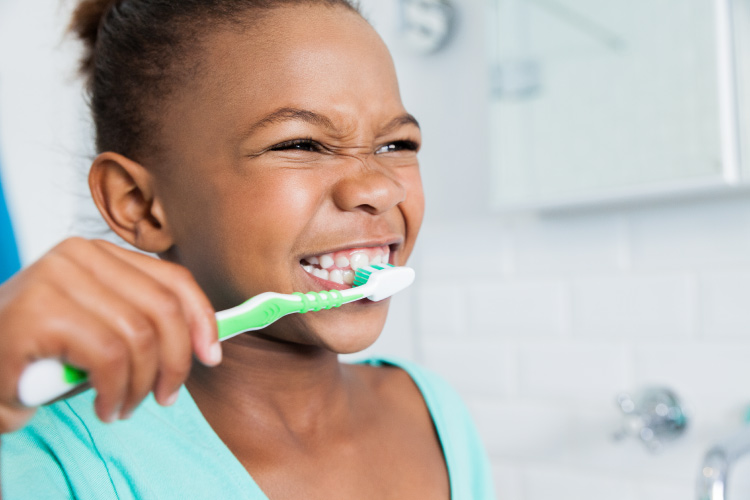CHOOSING THE RIGHT TOOTHBRUSH FOR YOUR CHILD

Choosing a toothbrush is somewhat like deciding on a new cereal for your family. Too many options, and very little information on the package that aids in helping you make an informed decision.
We’re here to help with the top three concerns you need to address when choosing a toothbrush for your kids.
- Match the brush to the mouth: When it comes to toothbrushes, one size does not fit all. A small mouth requires a smaller brush, and a bigger mouth a larger brush. A good frame of reference is to pick one that allows the bristles to adequately reach around the backside of the furthest molar in the mouth on each side. Likewise, when using a circular motion to brush the surfaces of the teeth, the brush should be able to clean the entire surface of the tooth while not missing any spots. Larger teeth may require a larger brush to make up for this factor. Toddlers would require a brush with a very small brush head, soft bristles, and a handle they can grip and hold onto with ease.
- When in doubt, opt for a softer brush: It seems kids are always in a rush – especially teens. And rushing through an oral care routine usually means your child will end up brushing too fast and therefore too hard. Since over-aggressive brushing can lead to sensitive teeth, dentists recommend using a “medium” or “soft” brush to dampen the side-effects of this bad habit. Adults should follow the same advice!
- Powered or manual? Some kids love the whirl of a powered toothbrush, while others could care less, so you’ll have to cater to what they think is “cool” and, of course, effective. Preferences aside, children with braces will likely have difficulty brushing in a circular motion because of the obstruction caused by their orthodontic brackets, so for them, an electric-powered toothbrush may help clean those hard-to-reach areas more effectively.
Lastly, our best advice on buying a toothbrush isn’t even our advice. Buy a toothbrush your kids will actually use. Pretty simple.
A toothbrush that sits in its cradle because it’s too big, too plain, too soft, or too hard, does no one any good, so be sure to get your child’s feedback. You may have to experiment with a few different styles to land on the correct choice – and it’s never too late to change from one brush type to another – but with their input and your due diligence, you’ll no doubt land on a brush that they’ll use, and use correctly. Happy Brushing!
